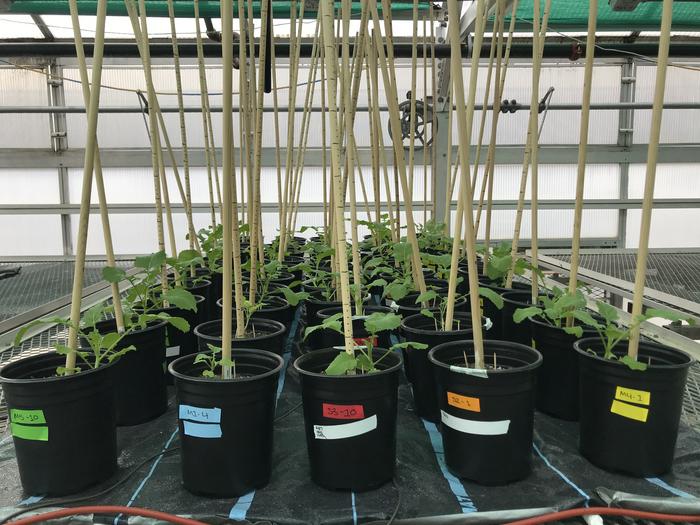With the forecast at your fingertips and RTK systems taking the guesswork out of straight rows, it’s hard to believe that it has only been 80 years since horses outnumbered tractors on the farm. Arguably, Norman Borlaug’s Green Revolution, which laid the foundation for agriculture as we know it today, is still going strong — encompassing new and ever-evolving technologies, continuing to give birth to its own revolutions and innovations while reducing hunger in under-developed nations throughout the world.
The Green Revolution began in the mid-1940s. However, the framework for the revolution was created three decades prior when German chemist Fritz Haber transformed nitrogen gas into a plant-available, digestible form: ammonia. The application of ammonia synthesis, scaled to industry by BASF’s Carl Bosch, allowed previously poor producing soils to significantly increase crop harvest yields.
The advancements made in the wheat fields of Mexico would ultimately set a new path for worldwide agriculture, and set in motion an unparalleled era of research and discovery within the industry. By the 1960s, the revolution had provided the basis for the breeding of plants with greater harvest indices, increased photosynthate allocation and less sensitivity to day length.
As crop yields rose, human health and nutrition improved, and the by the latter half of the 20th century the global population surpassed 7 billion, more than seven times the 1.6 billion the century began with. Today, the population continues to grow; inversely, farmland acreages are declining each year, creating an insatiable demand for agriculture to produce more using less.
The Precision Agriculture Revolution
Decreased acreage combined with a higher global population, forced agriculture as an industry to advance within the parameters of precision. Today, seed placement, nutrient and crop protection application, machinery, soil and root health, and data management all continue to be the focus of this precision market.
A 2016 study released by the United States Department of Agriculture (USDA) reports that precision agriculture continues to be adopted rapidly throughout the U.S. with the largest increases observed in acreages rather than individual farms; reporting that precision agriculture is used on more than 50 percent of corn and soybean acres.
With the rapid adoption of precision agriculture, technology has become an integral management component in many operations. With new advancements continuing to materialize in this sector, it’s hard to estimate exactly where in the precision agriculture revolution we are today.
University of Nebraska Extension associate professor Brad Lubben estimates that we are somewhere in the middle, with data management expected to be on the next horizon within the industry.
“Right now, we have the ability to produce an inordinate amount of data,” he says. “So the question becomes, ‘how do we actually manage it?’ Precision ag adoption is moving forward rapidly, but effectively utilizing all of the data captured just hasn’t caught up yet.”
Joshua Gattis, director of application for AgJunction, a precision agriculture solution company, agrees. He adds that as farmers narrow their focus to decision-making based on meaningful data, the next phase of precision agriculture will be determining which data has the greatest impact on overall return on investment.
“Precision agriculture, as we know it, has become a general expectation,” he says. “As we move forward, there’s going to be a time in the near future when precision won’t be designated, but rather a component of what a farm operation needs to get the job done.”
The Next Revolution
Where does this information leave us along the agriculture revolution highway? Many believe the next agricultural revolution will come as breakthroughs in soil and root health discovery.
Long known to be the foundation of agriculture, soil health is generating renewed interest throughout the agriculture community. Advancements in previously existing technologies allow scientists to study the complex symbiotic relationships between the soil biome and plant root systems.
Seed companies, tech startups and commodity groups are working independently and through partnerships to learn more about these relationships and how they can be used to influence higher yields. In turn, these collaborations bring to market industry revolutionizing soil, crop and seed management solutions.
Farmers are also taking notice of the important role healthy soils play in their input costs and overall return on investment.
“If you had asked (a farmer) even five years ago, ‘What’s a microorganism or what are ag-biologicals and how do they influence soil health?’ you were met with the comment that those things weren’t proven science,” says Pete Hayes, vice president of marketing for ABM, a microbiological company that works to provide yield-improving biological solutions. “That’s not the case today.
“Science has proven what we and other companies are doing, and farmers have responded to that. They are evolving in their management practices through their understanding of how important soil health is.”
Farmers have also taken interest in on-farm research and development and are voicing that interest through the allocation of their commodity checkoff dollars and participation in research programs. A farmer driven initiative, Soil Health Partnership, is a National Corn Growers Association program funded by corn grower checkoff dollars, government organizations, Monsanto and nonprofit partner contributions. The program collaborates with more than 100 farms across the Midwest to create protocols for on-farm soil health promoting practices.
The organization offers field days, collects and disseminates data and training information, and works with growers to implement best practice soil management within each operation. In its third year of programming, the Soil Health Partnership has established a new baseline for the way participating farmers think about soil health.
“There are things that we have known about our soils for a long time and haven’t been able to test,” says Elyssa McFarland, who serves as the Eastern Iowa field manager for the Soil Health Partnership. “It’s exciting that we are now moving into an era where we have the science and technology to test and measure some of those things that we only had a concept of before.”
For decades, farmers have made decisions using soil chemistry as the primary measurement of soil health and diversity. McFarland says that while those decisions have helped to advance agriculture and manage risk, there is much more to learn about the soil biome through physical and biological testing on a field scale level.
“Universities have been testing soil biology and soil physics for a long time but not in the context of implementing precision solutions on farms,” she says. “The farmers we are working with are going to be able to make better management decisions for their acreages by being able to measure things like aggregate stability on a larger scale.”
While the Soil Health Partnership creates advanced protocol in testing soil health through crop productivity, other groups are looking to the biology of soil as a solution to seed, crop and, ultimately, yield improvement.
According to USDA’s Natural Resources Conservation Service, there are somewhere between 100 million and 1 billion microbes in a single teaspoon of soil, and while the industry has been well aware of their presence for decades, improvements in existing technologies have allowed agriculture microbiology to reach new heights in the past decade.
With its sights on improvement goals within the major U.S. food crops of corn, soybeans, wheat and sorghum, BioConsortia, Inc., has developed an Advanced Microbial Selection (AMS) process that they tolerbelieve
will revolutionize seed treatment, drench and granule application.
AMS allows BioConsortia researchers to discover multiple beneficial microbes associated with one plant during one growing season. The premise of this technology, says CEO Marcus Meadows-Smith, lies in the microbe selection process, itself.
“We operate more like plant breeders than microbiologists,” Meadows-Smith says.
By starting thousands of seeds in growth chambers and changing only the plant microbiome, researchers are able to screen through hundreds of thousands of microbes, and combinations of microbes, in a rapid manner.
“Rather than looking for individual microbes, one by one, we look for the high performing plants that have been subjected to various stressors,” Meadows-Smith offers.
Those that are able to perform well are those that have attracted and are colonized by beneficial microbes. Several rounds of observation and selection are conducted, each time moving the entire plant biome to the next phase of the trial. At the conclusion of the final round of the trial, microbes are isolated from the remaining plants and analyzed to determine the smallest number of microbes effective in combating the stressor. That information is then used to calculate the baseline application seed treatment for plants expressing the same phenotypical tolerance trait.
BioConsortia researchers have found that trait expression usually is not a single microbe helping the plant tolerate a particular stressor but several endophytic microbes performing different, and complementary of the plant. Some microbial teams may stimulate the plant to grow bigger roots during periods of drought stress, while others may turn on the plants own genes that are associated with water stress tolerance. Most times these microbes are associated with the rhizosphere or the root system of the plant and are hosted in different locations.
This concept of selecting multiple microbes, rather than one by one, has eliminated the process of microbe compatibility when introduced together.
“Many times when (singly selected) microbes are introduced together it is found that (microbes) are antagonistic of one another and will not work together,” Meadows-Smith says. “Our teams of microbes are discovered on a single high performing plant, so we know that they are compatible with both one another and the plant.”
By looking for teams of beneficial microbes, rather than individual microbes, researchers are able to eliminate the introduction of singly selected microbes, a necessary phase in single-microbe selection trials.
Technology Breakthroughs
Across the industry, technological breakthroughs and scientific procedure advancements outside of the agriculture industry are credited with creating economically feasible solutions for farmers to implement new solutions within their risk management programs.
ABM’s policy of putting the farmer’s return on investment first is a good example of the type of economic feasibility associated with these new technologies. Hayes states if farmers aren’t going to see a return from a product, ABM isn’t going to bring it to market. Farmer returns have to be 2:1 or 3:1 at a minimum, meaning if a farmer initially spends $2 per acre, they have to see a $5 or $6 return before it is a product that the company will move forward with.
The decreasing cost of some science has also allowed for advancements that were previously considered too costly to pursue. Meadows-Smith cites this as one of the most marked advancements within the industry.
“When the first plant genome (Arabadopsis) was sequenced in 2000, the labor cost exceeded 500 people and the economic cost was around $70 million,” he says. “Today, I can get that same genome sequenced for $99.”
While soil and root health approach the forefront of the agriculture technology industry, one thing is certain: as long as the population continues to grow and deplete production acres, agriculture technology will continue to evolve. From the mechanical revolution to seed hybridization, the Green Revolution to genetic modification, precision agriculture to soil health, the agriculture industry will continue to advance and create new paths for large scale food production.













